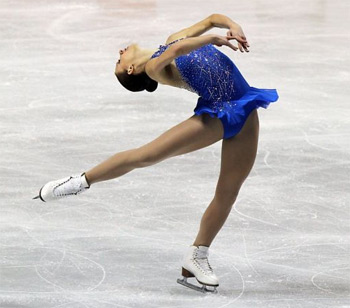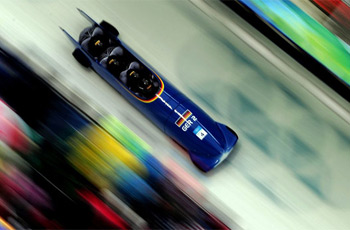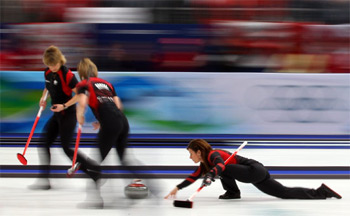Get ready to watch some exciting action on snow and on ice.
Anyone who straps on skis (or skates, for that matter) for the first time will feel as helpless as Bambi crossing the frozen lake. Those who persevere beyond the initial embarrassment will find the experience of darting down a slope or whizzing over a patch of ice most exhilarating.
The 2014 Winter Olympics are a good time to fall in love with winter sports. Even if you have no chance of frolicking on the snow in the foreseeable future (and few South Africans do), it does not mean that you can’t enjoy watching others do it on your TV screen. In that name, we bring you a brief overview of the 2014 Winter Olympic Games, to be held in Sochi, Russia, from 7 to 23 February 2014.
These, 22nd (or XXII) Winter Olympics will see about 2880 athletes competing in 15 disciplines over almost one hundred events.
 Skiing
Skiing
Alpine skiing is without doubt the queen of winter sports. Given half a chance, men’s and women’s downhill, super G, giant slalom, slalom, and combined will have you glued to the screen.
Ski jumping can make one dizzy simply from watching. For the first time, women ski jumpers will take part in the official Olympic programme.
Cross-country skiing is more about perseverance than about thrills (although medal winners will be excited enough).
Nordic combined is one of the rare men’s only disciplines. Athletes compete in both cross-country skiing and ski jumping.
Freestyle skiing can be described as snowboarding on a pair of skis and consists of men’s and women’s moguls, aerials, ski cross, superpipe, slopestyle, and ballet. Unusual terrains make it possible for the athletes to display tricks, jumps, turns and other acrobatics.
Snowboarding involves the use of only one (big) ski. Men and women compete in parallel, giant slalom, half-pipe, snowboard cross, and slopestyle events.
 Skating
Skating
Figure skating always attracts a large TV audience. And what’s not to love: it’s photogenic, elegant, acrobatic…Men and women compete in singles, pairs, ice dancing and in team events.
Speed skating allows for only two skaters to race at a time in individual events. In the team pursuit, two teams, each with three skaters, are allowed to race at once.
Short track speed skating is similar to speed skating, only the rink is smaller, the racing distances are shorter, and the athletes have a mass start.
 Sliding
Sliding
Bobsleigh or bobsled has teams of two or four slide down narrow and twisting frozen track in a sled.
Skeleton is a single-person sled race, with riders lying on their stomach, face-first.
Luge riders travel feet-first on their backs. Of the three Olympic sliding sports, luge is the fastest and most dangerous.
 Curling
Curling
At first sight, nothing could seem more boring than watching people sliding a large flat object and scurrying to clean the ice in its path with a long broom. But, then you start paying attention… and really get into it.
This sport involves lots of teamwork and strategy. That’s why it’s called “chess on ice”.
Biathlon
In this sport, athletes race cross-country and shoot at a target, all the while on skis (which they take off when shooting in the prone position).
Ice hockey
It’s like field hockey, only on ice. The players wear helmets, heavily padded protective clothing and (of course) skates. While not (strictly speaking) allowed, fighting seems to be the norm and much enjoyed by the audiences.
Practically every country that has even a trace of snow will be represented at the XXII Winter Olympics, plus some that have not seen a snow flake in decades (like Zimbabwe). Traditionally, among the best-performing countries in winter sports are the USA, Norway, Austria, Canada, Russia, Finland, Germany, Sweden, Switzerland, Italy, France and so on.
Unfortunately, South Africa will be absent from the 2014 Winter Olympics, for the first time since the country was re-admitted into the international sporting world in 1994. The national Olympics committee decided not to send the young Alpine skier Sive Speelman to Sochi, citing that the teenager (Speelman is only 18 years old) “failed to meet minimum requirements”.
Hopefully, next time…









